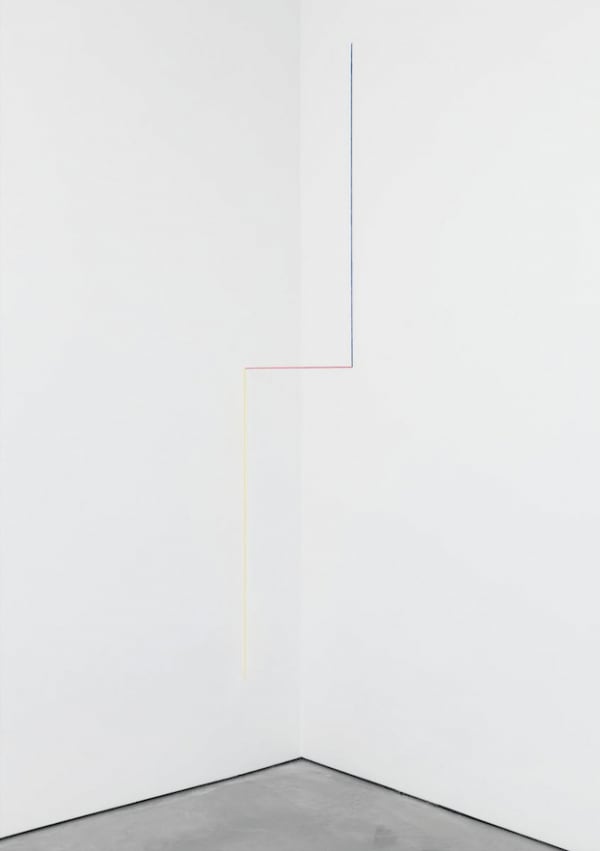Fred Sandback
Fred Sandback, a pioneering American sculptor, was born on August 29, 1943, in Bronxville, New York. Renowned for his minimalist and conceptual approach to sculpture, Sandback’s works pushed the boundaries of perception and spatial awareness.
Sandback’s artistic journey began during his early years when he studied philosophy and art history at Yale University. It was during this time that he began experimenting with various artistic mediums, including drawing and printmaking. However, it was his encounter with Minimalism that proved to be a turning point in his career. In the late 1960s, Sandback’s work took a decisive shift when he began creating sculptures using colored yarn or acrylic yarn. He used these materials to create large, geometric forms that seemingly floated in space. By manipulating simple lines and planes, Sandback’s sculptures created an illusion of volume and mass without physically occupying space. Central to Sandback’s artistic practice was his interest in the interplay between sculpture, architecture, and the viewer. His sculptures were site-specific and engaged with the surrounding space, challenging the traditional notions of sculpture’s physicality and permanence.
A key aspect of Sandback’s art was the idea of dematerialization. His yarn sculptures blurred the distinction between object and environment, prompting viewers to engage with the artwork’s conceptual presence rather than its physical form. Sandback’s sculptures often occupied entire rooms, using the gallery or exhibition space as an integral component of the artwork. The use of yarn allowed him to create ethereal and transparent structures that encouraged viewers to actively participate in the perceptual experience of the art. Despite his groundbreaking contributions to sculpture, Fred Sandback remained a relatively private and reclusive artist. Fred Sandback passed away on June 23, 2003, in New York.


